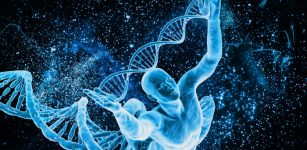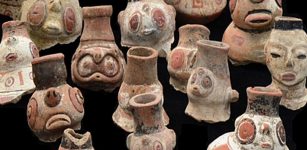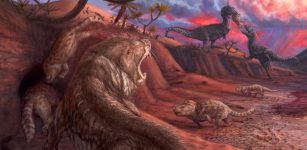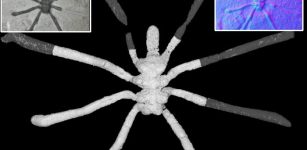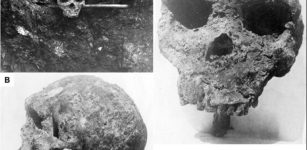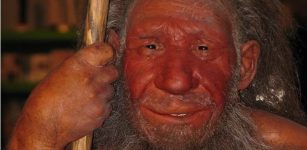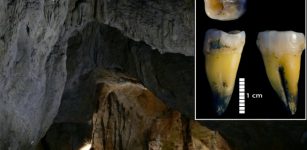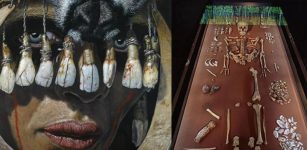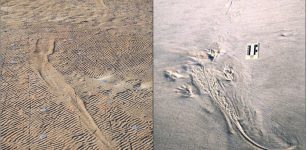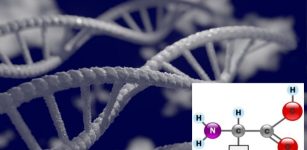Remarkable Fossil Chromosomes Found In 52,000-Year-Old Woolly Mammoth
Jan Bartek - AncientPages.com - An international team of scientists has made a groundbreaking discovery in paleogenomics. They have identified fossilized chromosomes in the remains of a woolly mammoth that lived approximately 52,000 years ago.
Fossil chromosomes are a powerful new tool for studying the history of life on Earth. That's because typical ancient DNA fragments are rarely longer than 100 base pairs, or 100 letters of the genetic code—far smaller than the full DNA sequence of an organism, which is often billions of letters long. By contrast, fossil chromosomes can span hundreds of millions of genetic letters.
The researchers obtained a skin sample from this woolly mammoth, which had been preserved in the Siberian permafrost. To analyze this rare specimen, they employed an innovative experimental technique that allowed them to examine the three-dimensional architecture of the mammoth's genome. This discovery is significant because it preserves the structure of ancient chromosomes at an incredibly detailed level, down to the nanometer scale, which is equivalent to billionths of a meter.
The new study provides unprecedented insights into the genetic makeup of extinct species and offers a new perspective on the preservation of genetic material over vast periods of time.
"We've known that tiny fragments of ancient DNA can survive for long periods of time," said Dr. Marcela Sandoval-Velasco of the Center for Evolutionary Hologenomics at the University of Copenhagen and co-first author of the new study.
"But what we found here is a sample where the three-dimensional arrangement of these DNA fragments was frozen in place for tens of millennia, thereby preserving the structure of the whole chromosome."
"By comparing ancient DNA molecules to the DNA sequences of modern species, it's possible to find cases where single letters of the genetic code have changed," said co-first and co-corresponding author Dr. Olga Dudchenko, assistant professor of molecular and human genetics at the Center for Genome Architecture at Baylor College of Medicine and senior investigator at the Center for Theoretical Biological Physics at Rice University.
Skin from a 52,000-year-old woolly mammoth after its removal from Siberian permafrost.Credit: Love Dalén/Stockholm University
"Fossil chromosomes are a game-changer, because knowing the shape of an organism's chromosomes makes it possible to assemble the entire DNA sequence of extinct creatures. This enables the types of insights that would not have been possible before."
Since the fossil chromosomes came from a mammoth, one of the first things the team did was to determine the number of chromosomes that the woolly mammoth possessed.
"We found that they had 28 pairs of chromosomes, which makes a lot of sense, because that's what modern elephants have, and they are the woolly mammoth's closest living relative," said Dr. Juan Antonio Rodríguez, co-first author of the study and a researcher at the University of Copenhagen and at Center Nacional d'Anàlisi Genòmica in Barcelona, Spain.
"It was extremely exciting to be able to count the chromosomes of an extinct creature for the first time. It's usually not possible to have this much fun simply counting from one to 28."
By examining the fossil chromosomes, which derived from the mammoth's skin, it was possible to see which genes were active. This is because of a phenomenon called chromosome compartmentalization—the fact that active and inactive DNA tends to segregate into two spatial neighborhoods inside the cell nucleus. For most genes, the activity state matches what researchers saw in modern elephant skin. But not always.
"The obvious question for us was: why is it a 'woolly mammoth?' Why isn't it a 'shockingly bald mammoth?'" said Dr. Thomas Gilbert, director of the Center for Hologenomics and co-corresponding author of the paper.
"The fact that the compartmentalization was still preserved in these fossils was critical, because it made it possible to look, for the very first time, at which genes were active in a woolly mammoth. And it turns out that there are key genes that regulate hair follicle development whose activity pattern is totally different than in elephants."
Researchers learned much but they were left with a puzzle: how could the DNA fragments of ancient chromosomes possibly survive for 52,000 years with their three-dimensional structure intact? After all, in 1905—his 'annus mirabilis,' or 'miracle year'—Albert Einstein published a classic paper calculating how quickly small particles, like bits of DNA, tend to move through a substance.
"Einstein's work makes a very simple prediction about chromosome fossils: under ordinary circumstances, they shouldn't exist," Dudchenko said. "And yet: here they are. It was a physics mystery."
To explain this apparent contradiction, the researchers realized that the chromosome fossils were in a very special state, closely resembling the state of molecules in glass. "Chromoglass is a lot like the glass in your window: it's rigid, but it's not an ordered crystal," said Dr. Erez Lieberman Aiden, co-corresponding author of the study, director of the Center for Genome Architecture and professor at the Baylor College of Medicine.
"If you zoom in on the individual particles, a piece of glass—or a piece of chromoglass—is basically a bumper-to-bumper nano-scale traffic jam, in a world with no lane markers. Individual particles, or individual fragments of ancient DNA, just can't move very far in that situation. Even if you wait for thousands and thousands of years."
The idea that the mammoth remains, unearthed in 2018 in Siberian permafrost, were preserved in a glass-like state is not so far-fetched. Without realizing it, many civilizations developed ways to induce a 'glass transition' in their food as a way to preserve it, usually by a combination of cooling and dehydration.
A photo of a mammoth foot in a permafrost environment. Credit: Love Dalen
This resulted in foods, like tortilla chips and beef jerky—that are more brittle than the original food, but that last much longer. And it is why the glass transition has become a key concept for modern food scientists. Essentially, the researchers discovered that the chromosome fossils had been trapped inside a piece of freeze-dried woolly mammoth jerky.
"We confirmed this theory by doing experiments on old, freeze-dried beef jerky, which is much easier to find than woolly mammoth jerky," explained Dr. Cynthia Pérez Estrada, co-first author of the study and a researcher at the Center for Genome Architecture and at Rice University's Center for Theoretical Biological Physics.
"We fired a shotgun at it. We ran over it with a car. We had a former starting pitcher for the Houston Astros throw a fastball at it. Each time, the jerky broke into tiny bits—shattering like a glass. But at the nano-scale, the chromosomes were intact, unchanged. That's the reason these fossils can survive. That's the reason that they were there, 52,000 years later, just waiting for us to find them."
The study led by scientists from Baylor College of Medicine, University of Copenhagen, and Center Nacional d'Anàlisi Genòmica and Center for Genomic Regulation report the findings in the journal Cell.
Written by Jan Bartek - AncientPages.com Staff Writer






